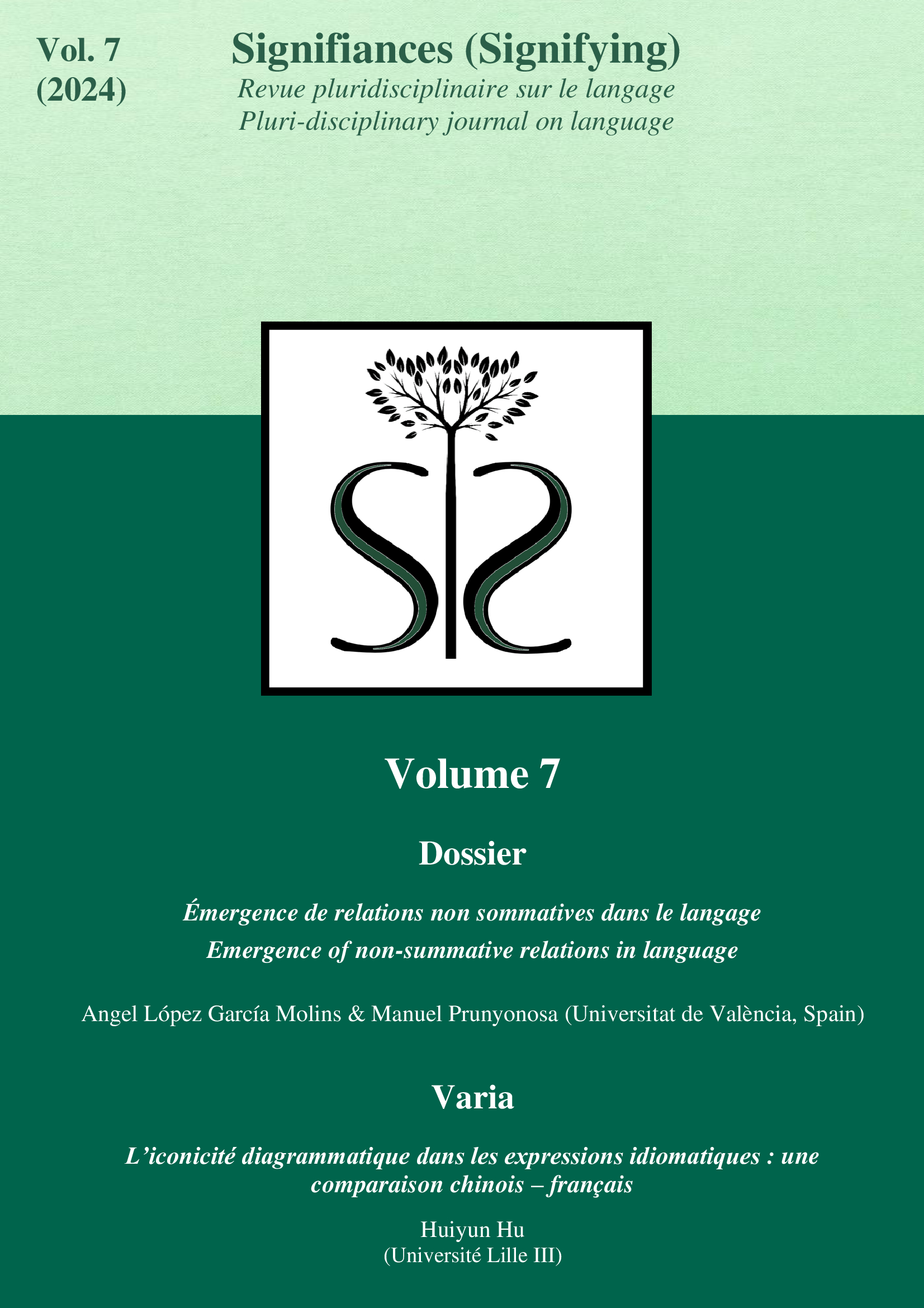L’iconicité diagrammatique dans les expressions idiomatiques : une comparaison chinois/français
DOI :
https://doi.org/10.52497/signifiances.v7i1.358Résumé
Les expressions idiomatiques (désormais EI) sont souvent perçues comme arbitraires. Néanmoins, leur non-arbitrarité est défendue non seulement au niveau sémantique, à travers des recherches sémantico-cognitives, mais aussi au niveau de leur composition structurale. Cette étude explore le rôle des contraintes sémantiques dans l’ordre des trois types de constituants « binomiaux » des EI : numéral, spatial et temporel, en comparant le français et le chinois, deux langues typologiquement et culturellement éloignées. En nous appuyant principalement sur les travaux de Cooper et Ross (1975) et de Tang (1988), nous examinons dans quelle mesure ces ordres peuvent correspondre à des phénomènes d’iconicité diagrammatique.
Idiomatic expressions (hereafter IE) are often considered arbitrary. Nevertheless, their non-arbitrariness is supported at semantic level, especially by semantic-cognitive research, but also at structural level. This study investigates the orle of semantic constraints in the ordering of three types of “binomial” constituents in IEs: numerical, spatial, and temporal, through a comparative analysis of French and Chines, two languages that are typologically and culturally distant. Relying primarily on the work of Cooper and Ross (1975) and Tang (1988), we investigate the extent to which these orders might reflect diagrammatic iconicity.


